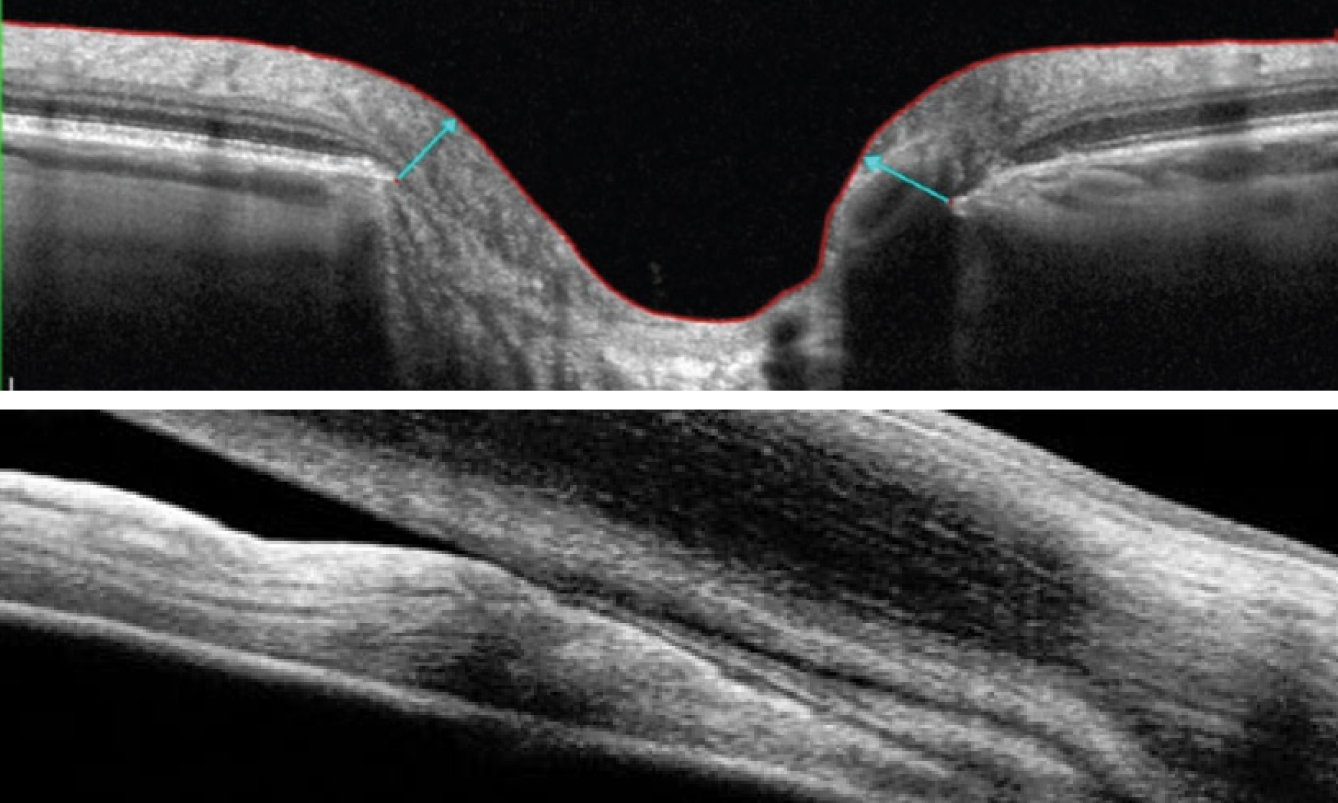 |
| Genetics play a major role in POAG (left) while PACG (right) is affected more by environmental contributions. Photo: James Fanelli, OD; Michael Cymbor, OD. Click image to enlarge. |
Management of primary angle-closure (PACG) and open-angle glaucoma (POAG) are vastly different, especially in early stages of each disease. For high-risk individuals, disease screening and health education can help achieve an earlier diagnosis. Family history contributes to risk in both diseases, but according to a study recently published in the American Journal of Ophthalmology, the genetic contribution varies widely between the two glaucoma subtypes.
Using a Taiwanese health insurance database, the researchers isolated more than four million families from 23.3 million individuals in the 2017 population. They estimated glaucoma’s heritability and familial transmission with a polygenic liability model and assessed individual risk based on first-degree relatives with glaucoma.
Based on their models, the researchers reported that prevalence rates for individuals with a first-degree relative with either PACG and POAG were 0.95% and 2.4%, respectively. This risk was higher than that of the general population.
The relative risk of PACG or POAG in individuals who have a first-degree relative with PACG or POAG was 2.44x and 6.66x, respectively. The estimated contributions to phenotypic variances for both diseases, respectively, were as follows:
- 19.4% and 59.6% for additive genetic variance
- 19.1% and 23.2% for common environmental factors shared by family members (e.g., smoking, alcohol consumption, diet, exercise habits, infections)
- 61.5% and 17.2% for non-shared environmental factors
“Our results indicate that a family history of glaucoma is a strong predictor of primary glaucoma, especially for POAG, consistent with the findings of causative mutations in patients with both types of primary glaucoma,” the researchers explained in their paper. “Genetic and environmental components contribute differently to their etiology.”
They added that, although genome-wide association studies and other gene studies have identified several associated genes and loci, the precise roles these factors play in glaucoma are still unclear. “Understanding the genetic and environmental contributions of both types of primary glaucoma might provide better insights into the mechanism of disease development,” they concluded. They hope future studies will identify more novel environmental determinants of PACG.
Lee J, Kuo C, Chen W, et al. Genetic and environmental contributions of primary angle-closure glaucoma and primary open-angle glaucoma: a nationwide study in Taiwan. Am J Ophthalmol 2023. [Epub ahead of print]. |

